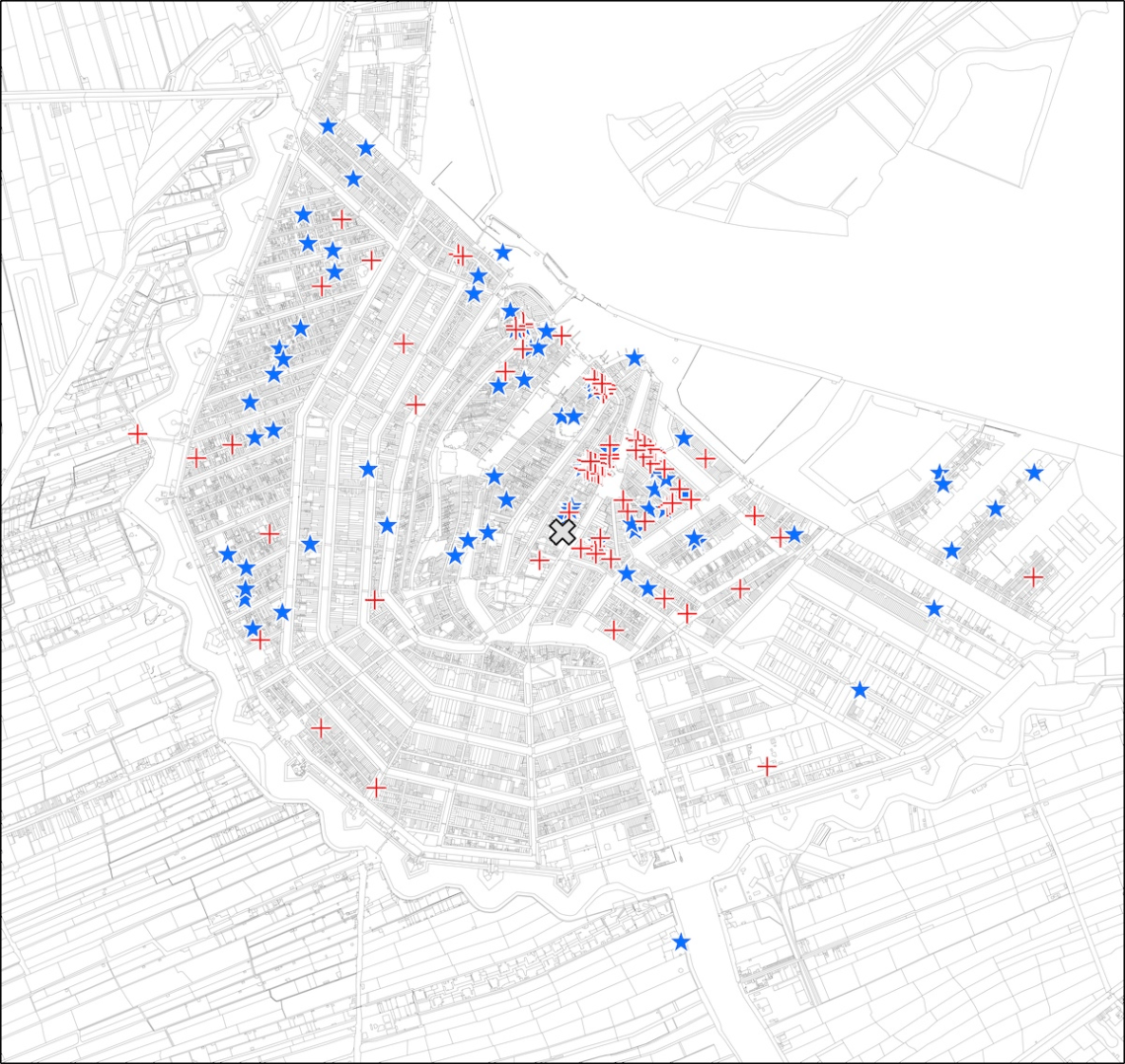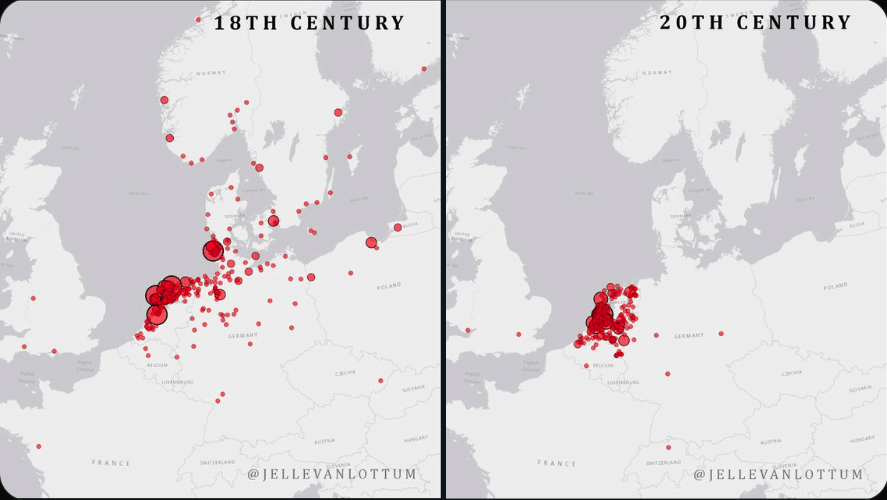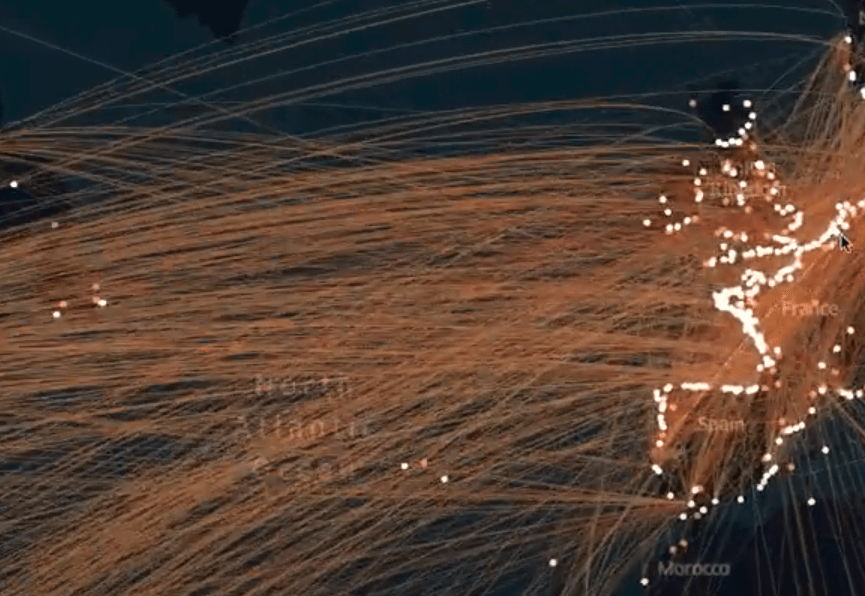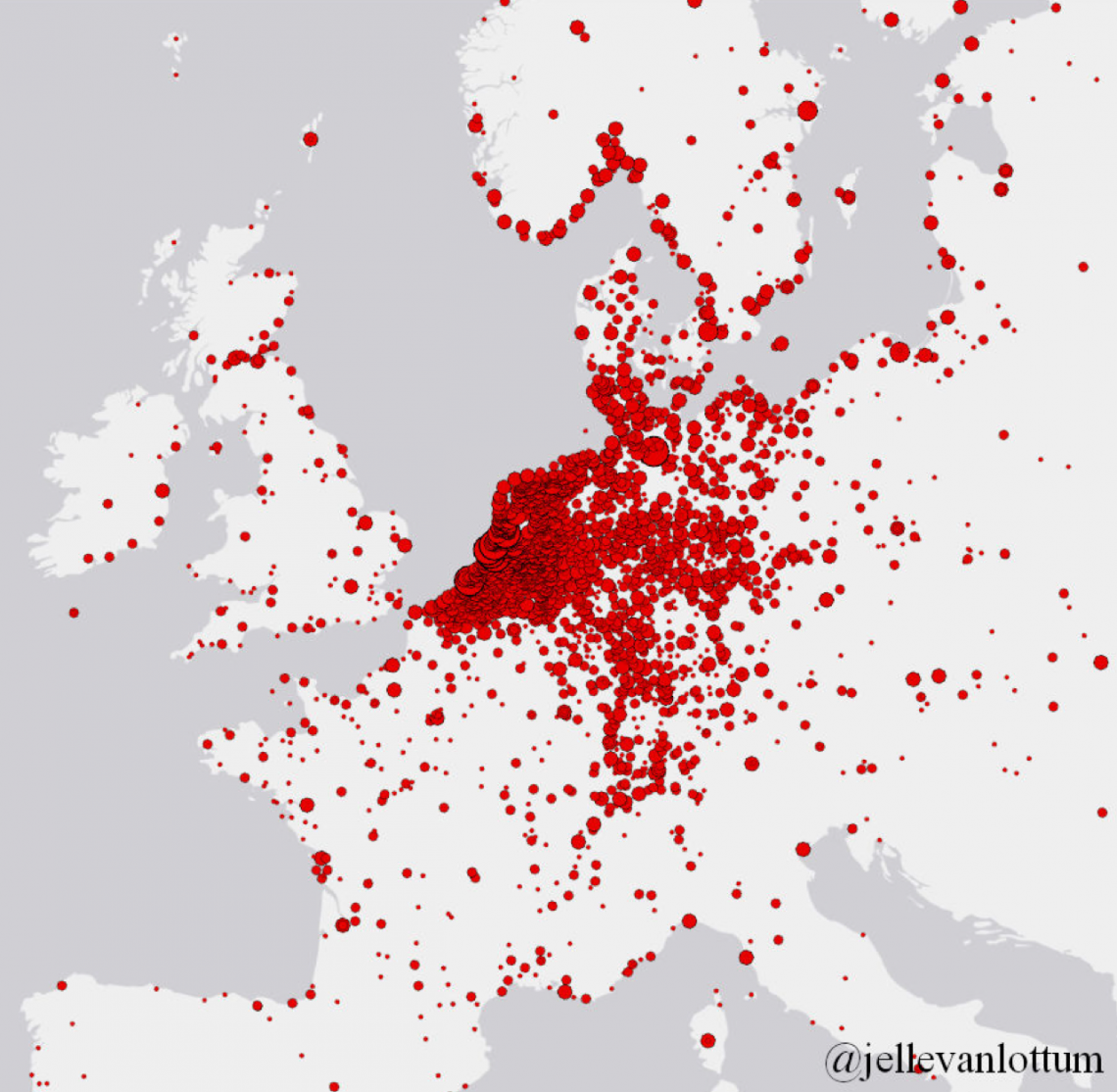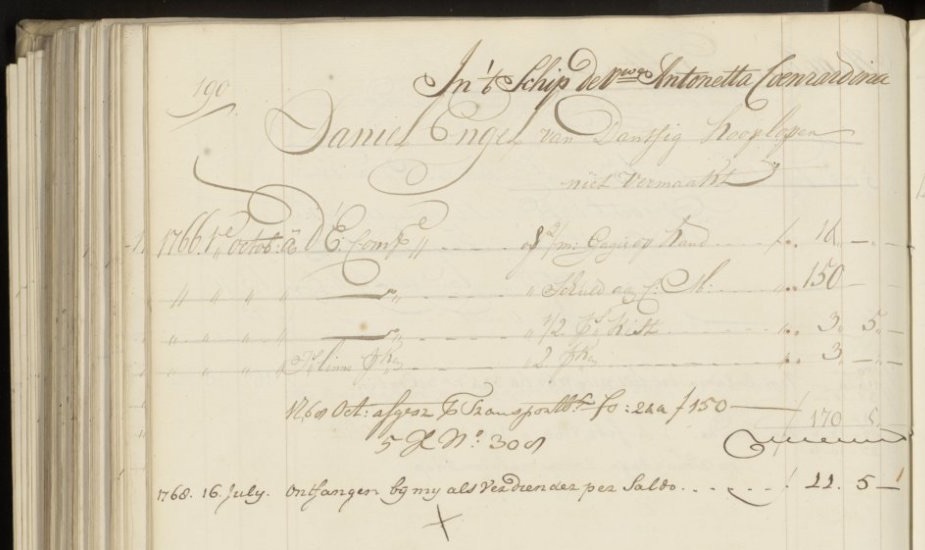Maps
-
VOC Sailors’ Last Days in Europe
Our new Dutch-language book, In de schaduw van de stad (Amsterdam: Ambo|Anthos 2023), which tells a series of short stories about ‘ordinary’ Amsterdammers through the ages, includes a chapter on sailors. We researched the crew members of three VOC ships that left Amsterdam in November 1775: who were they, where did they come from, where did they live or stay in Amsterdam? It was known that inns played an important role in the lives of many aspiring VOC sailors by providing a place to stay and information about finding work with the VOC. And it was also known that this was especially true for migrants. But we were surprised when…
-
Where Dutch seafarers on Belgian merchant vessels came from (1845-1885)
In an earlier post, our colleague Kristof Loockx, postdoctoral researcher at the University of Antwerp, wrote about the Antwerp seamen’s registry–a great source for maritime historical research. In this post, he takes a closer look at the Dutchmen in this registry: where in the Netherlands did they come from? Foreigners in the Antwerp seamen’s registry During the nineteenth century, there were never enough Belgian seafarers to meet the demand for labour of the Belgian merchant fleet. The Belgian merchant marine therefore relied heavily on foreign labour. In general, the ratio of Belgian to foreign seafarers was about 1:2 in the middle of the century, and 1:2.8 in 1890. We know…
-
First results from our project on the recent history of merchant marine sailors
We can show some first results from our recently started project on sailors aboard Dutch merchant marine ships in the 19th and 20th centuries. Researcher Daniël Tuik has been working on a sample of personnel records from the archives of the Koninklijke Nederlandse Stoomboot-Maatschappij (KNSM), a shipping company that was based in Amsterdam. He tells more about his work in another blog post. The map on the right in Jelle’s tweet shows the birthplaces of KNSM crew members in the 20th century, mainly sailing on trans-Atlantic routes, while the one on the left shows where the sailors came from who appear in the Prize Paper dataset, which also mainly contains…
-
Women sailors in the ranks of the Dutch East India Company
Last week, Jelle tweeted about the women who dressed up as men to land a job with the VOC and were fired when subsequently their ‘real’ gender became known. Several people have asked for more information, in particular about the origins of the women involved. Below is a spreadsheet that lists their (for obvious reasons fake) names, and their place of origin – all other information available about the individuals are also listed. As you can see in the ‘remarks’ column, there are some really interesting cases: a woman going by the name of ‘Hendrik Huijsloop’ married a fellow sailor on board the Petronella Alida, and the ‘Joannes Burghart’ case…
-
Daniel Engel: a maritime career reconstructed
Daniel Engel was a young man from ‘Dantsig’ (modern-day Gdańsk in Poland) who travelled to the Dutch Republic in the mid-18th century to apply for a job with the Dutch East India Company (VOC). We’ve written about him before (in this blog post, where we introduced the Company’s pay ledgers, one of our main data sources) and now come back to him once more. Not that Engel is so special–on the contrary, there were thousands of men like him in the ranks of the VOC–but because his story is a good case in point for illustrating our work on reconstructing maritime careers. 1766: first journey to the East Indies A…
-
Walking through the Prize Paper Dataset
This video provides a tour through the Prize Paper dataset using Kepler. Kepler is an amazing open source geospatial analysis tool for large-scale data sets. Here I’ve used it get an impression of the geographical scope of the Prize Paper Dataset – focusing on the shipping connections. Every line represents the journey of an 18th century merchant ship. As you can see the main connections are intra-European and Transatlantic. We’ll make the dataset available (hopefully) sometime early next year. Please look at my twitter feed for any updates and other visualisation (maps in particular), using this dataset.
-
Elsevier article on geographical spread VOC crew members
Dutch weekly Elsevier published an article about our work on the birthplaces of the sailors who worked on the Dutch East India Company’s ships.
-
Where the VOC crews came from
The pay ledgers of the Dutch East India Company (VOC) are an important data source for our projects (we tell more about this source in this blog post). The following dynamic heatmaps give a good impression of the regions where the sailors on board of the ships headed for Asia originated. For clarity reasons, crew members from one of the six VOC towns (Amsterdam, Delft, Enkhuizen, Hoorn, Middelburg and Rotterdam) were excluded from these maps.
-
Data: VOC maritime personnel records
Our research on the careers of maritime workers is based on a number of data sources, which we’ll introduce in separate blog posts. First up is a database containing the maritime personnel records of the Dutch East India Company (VOC). In the period 1602-1795, just under 5,000 Dutch East India Company ships sailed from the Dutch Republic to Asia. Each of these kept a pay ledger, in which personal particulars and salary information for all paid crew members were registered. Not all pay ledgers have survived until today, but for the late 17th and, especially, the 18th century, the ledgers give a very good view of the (highly international) workforce of…
